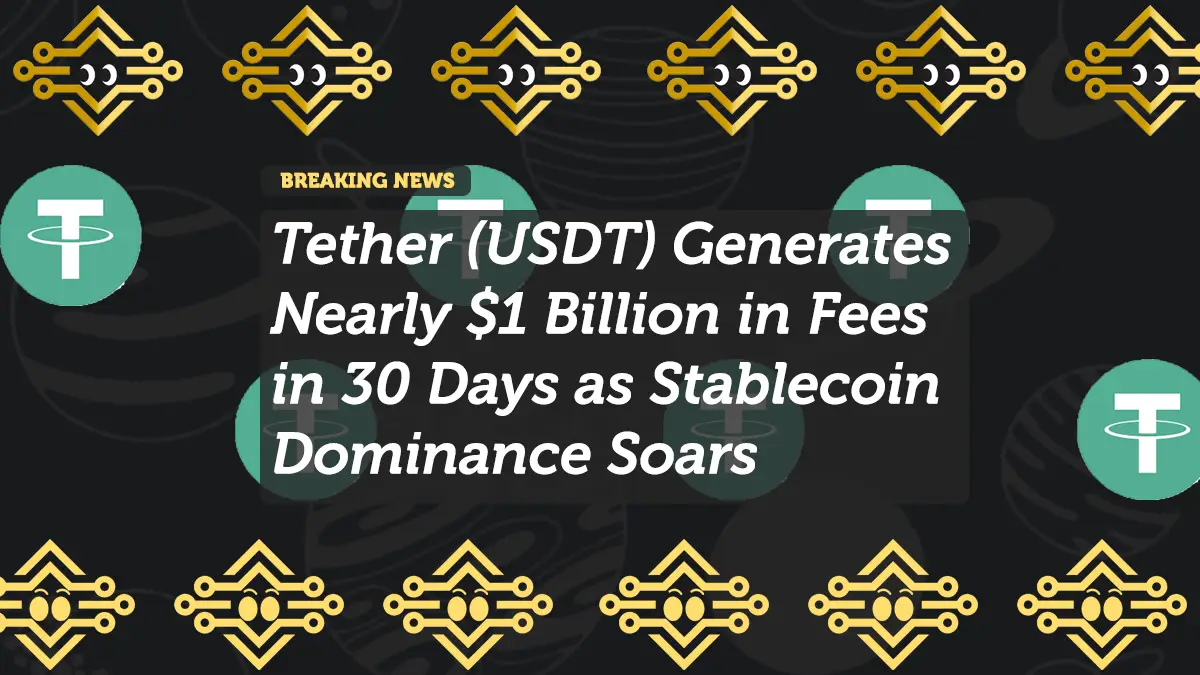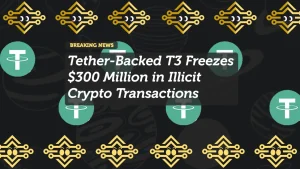
Tether (USDT) Generates Nearly $1 Billion in Fees in 30 Days as Stablecoin Dominance Soars
According to fresh on-chain revenue data from DeFiLlama, Tether — the issuer of USDT, the world’s largest stablecoin — generated nearly $1 billion in fees over the past 30 days. It’s a staggering figure that underscores USDT’s unparalleled reach and rapid expansion across exchanges, blockchains, remittance networks, and global commerce.
With over $120 billion in circulating supply, USDT is now not just a crypto asset — but one of the world’s most widely used digital dollars.
Here’s what’s driving the explosive fee growth.
USDT Fees Hit Nearly $1B: What’s Behind the Surge?
Tether earns revenue primarily from:
Transactional Fees Across Blockchains
USDT is active on more than a dozen networks including:
- Tron
- Ethereum
- Solana
- BNB Chain
- Polygon
- Ton
- Avalanche
Tron and Ethereum alone account for over 80% of USDT volume, with daily on-chain transfers exceeding $50–100 billion.
More transfers = more fees.
Interest Income on Reserves
While not classified as “fees,” Tether earns billions annually from:
- U.S. Treasury yields
- Overnight repo markets
- Cash equivalents
This revenue structure strengthens the balance sheet and reduces risk during market volatility, boosting demand for USDT.
Exploding Global Use Cases
USDT is now a major economic rail for:
- Cross-border payments
- Emerging market remittances
- Dollar hedging in inflation-hit countries
- Stable settlement for exchanges and brokers
- OTC desks and payment processors
- Real-world commerce in Asia, Africa, LATAM, and the Middle East
Large adoption = large recurring fees.
USDT Dominates 75% of All Stablecoin Supply
USDT currently controls:
- 75% of the global stablecoin market
- Over $20 billion in daily trading volume
- More volume than Bitcoin, Ethereum, and all other stablecoins combined
USDC and DAI have grown — but they are nowhere near USDT’s network effects.
This dominance directly translates into higher operational and processing revenues.
Why Tether’s Revenue Matters for Crypto
Tether’s ability to generate nearly $1 billion in 30 days has broader implications:
✔ Reinforces confidence in its reserves
More revenue = stronger backing = greater stability.
✔ Demonstrates real-world utility
USDT is increasingly used outside crypto, especially in countries with unstable local currencies.
✔ Positions Tether as a global financial institution
Fees at this scale rival major fintech companies.
✔ Expands stablecoin infrastructure
Higher revenue enables:
- Blockchain partnerships
- Real-world asset integrations
- Institutional expansion
- Global payment system growth
Is USDT Becoming Too Dominant?
While Tether’s success is undeniable, risks exist:
⚠ Centralization concerns
USDT relies heavily on Tron — critics warn about regulatory dependence.
⚠ Regulatory pressure
U.S. and EU regulators continue monitoring stablecoins as systemic financial instruments.
⚠ Market concentration
Tether’s dominance may hinder competition and innovation in the stablecoin sector.
Still, Tether’s transparency reports and growing balance sheet have improved market trust significantly.
What’s Next for USDT?
Based on current velocity, Tether is on track to:
- Exceed $10–12 billion in annualized revenue
- Expand deeper into RWA markets
- Integrate with major fintech rails
- Push further into Asia, Africa, and LATAM payments
- Enhance cross-chain interoperability
Stablecoins are becoming global money — and USDT is leading the charge.
Conclusion
With nearly $1 billion in fees generated in just 30 days, USDT continues to cement itself as the most dominant digital dollar in the world — powering global payments, DeFi liquidity, and exchange volume at a scale no competitor currently matches.
The data is clear:
Tether isn’t slowing down — it’s accelerating.














